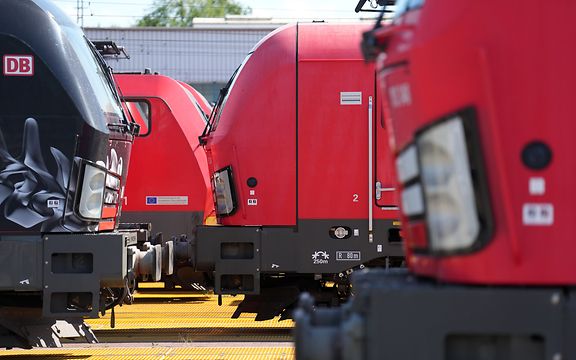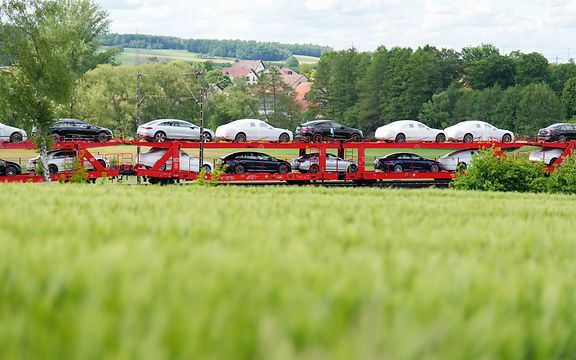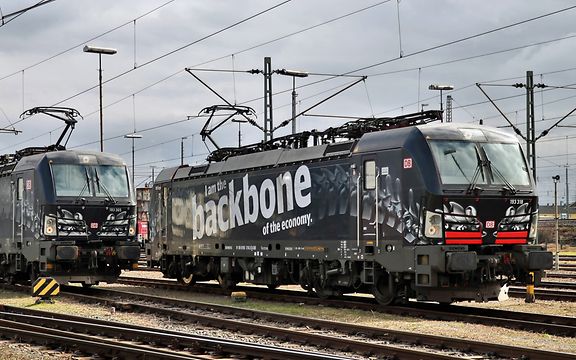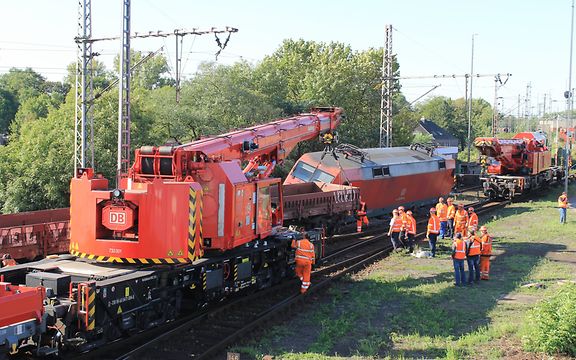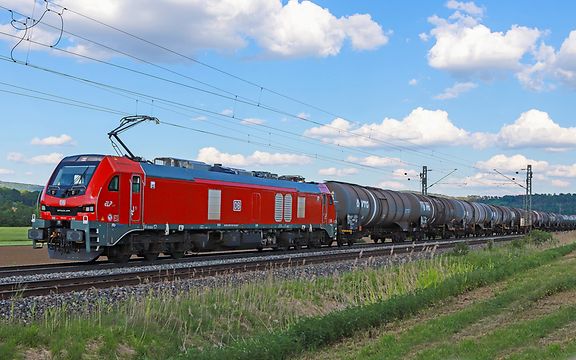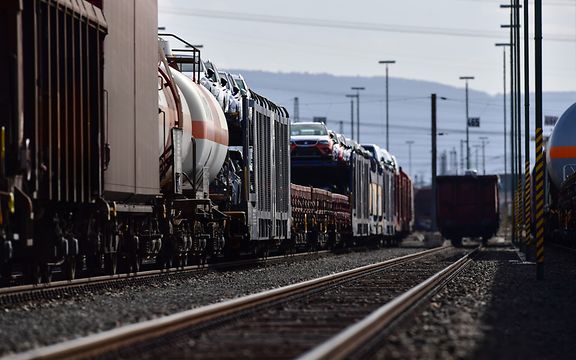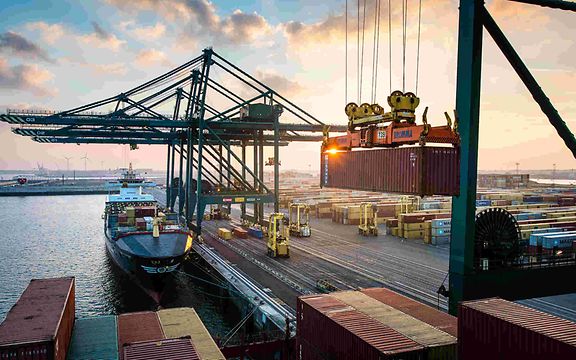Best Practice in Neubrandenburg
Webasto expands successful logistics project with DB Cargo.
Webasto is one of the 100 largest automotive suppliers in the world. Since 1990, this world market leader has produced over 24 million vehicle heating systems at its Neubrandenburg facility alone, says plant manager Andreas Dikow. His office in Neubrandenburg, located in the northern German state of Mecklenburg-Vorpommern, overlooks the town’s freight station. “That’s what gave Webasto the idea of reviving an old tradition,” says Karl Gümpel, who runs the customer solutions centre at DB Cargo Logistics. It didn’t take long to design a tailor-made pilot project for Webasto, because existing rail equipment could be used for the job despite the customer-specific details of the brief. Several weeks of testing how to supply the Neubrandenburg factory by train began at the end of 2021. Webasto ran these trials with DB Cargo Logistics and Gertner, a haulage company from Altentreptow that has been its long-standing business partner. The manufacturer wanted to assess the viability of using rail for transporting freight from two of its suppliers, one in southern Germany and the other in the Czech Republic. These two firms supply the Neubrandenburg plant with a wide range of components that are used in electric vehicles’ heating systems.
Reliability and economic efficiency
„Webasto is systematically looking for freight logistics solutions that are efficient and as climate-friendly as possible too,” Gümpel says. Dikow explains: “Sustainability is an important factor in the future design of our service and supply chains. At the same time, maximum reliability and economic efficiency are essential in the automotive sector. Our tests did well in every category, so we have decided to expand the project by including other partners.” One of the prerequisites for switching to greener rail freight transport is the existence of regular (and therefore scheduling-friendly) cargo volumes that are large enough to fill a single wagon on each run from the suppliers to Webasto.
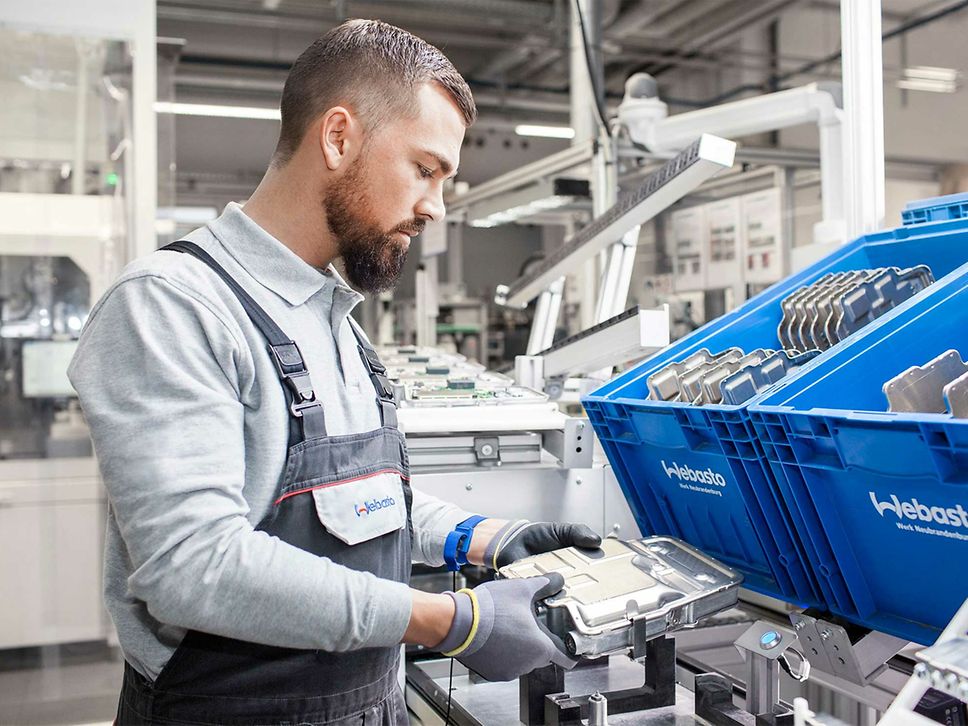
Possible reduction of over 75% in transport-related CO2
Transport containers filled with empty crates go from Webasto’s Neubrandenburg plant to the suppliers by rail. These companies then load the ordered components and send the containers back north. The large-scale trial used rail services on 95% of the total length of each round trip of 1,200 or 1,400 km, depending on the supplier’s location. Previously, transportation had relied entirely on road haulage. As the suppliers do not have a direct link to the rail network, lorries were used on the remaining 5% of each route, accounting for a maximum distance of 70 km. One of the most important outcomes of the pilot project: replacing lorries with freight trains makes it possible to eliminate at least 75% of CO2 emitted by transport services to and from Webasto’s Neubrandenburg site. Now, Webasto wants to make further long-term reductions to its emissions and harness the potential that larger rail freight volumes offer in terms of efficiency. To achieve these goals, it plans to expand its logistics project by incorporating more suppliers from Germany, the Czech Republic, Hungary and Romania. The next test phase is scheduled for the second quarter of 2022. In the medium term, the company plans to use rail for moving over 50% of all heating components to its Neubrandenburg plant.
Template for other clients
Webasto aims to wind the trials up and make the transition to regular services in the first half of 2022. The company also plans to assess what other potential the shift to rail offers for the Neubrandenburg site. The two suppliers in the pilot scheme account for 15% of the plant’s total purchasing volume, and using rail to move over 50% of suppliers’ parts is one conceivable option. Building a private siding is a long-term goal. The Webasto Group aims to incorporate the findings from the project into its global sustainability initiative at other sites. “It’s great to be able to support Webasto in achieving its goals and shifting transport to the environmentally friendly railway,” says Gümpel. “We could also use the Webasto solution as a template for other customers. It would be ideal if Webasto had its own private siding: then we wouldn’t have to work in the open when handling cargo at Neubrandenburg’s freight yard. There are plans to upgrade the signalling system at the station, which could potentially have significant benefits for rail freight operations in the region.”
Rail freight transport all the way to China
A lot more will become possible if everything goes according to Webasto’s plans. For example, the company is currently working with DB Cargo Logistics on a parallel project for a rail-based freight link between its plants in Neubrandenburg and Wuhan in China. The groundwork is already in place. “If we could use the rail line right beside our premises for loading wagons to Wuhan, we could rely exclusively on trains for moving material between Germany and our other production site in China,” says Dikow. “Components for electric vehicles’ heating systems are one example. Not only would this be an improvement in terms of our Neubrandenburg plant’s carbon footprint, but it would also offer the entire Webasto Group new future-oriented opportunities.”
